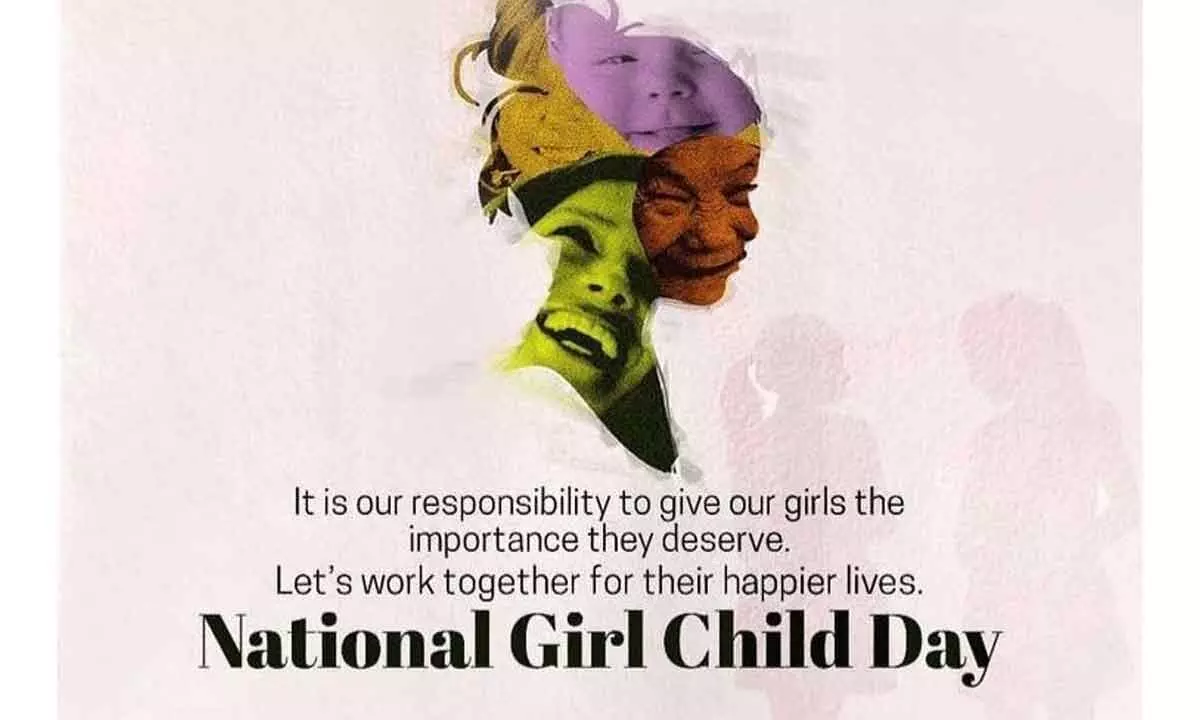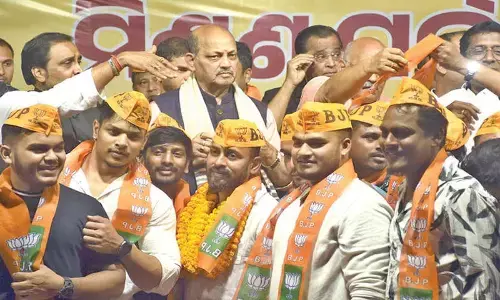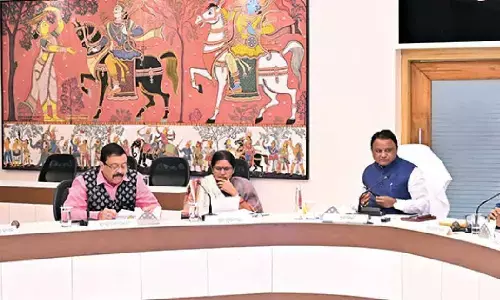Unveiling progress, challenges on National Girl Child Day

National Girl Child Day is celebrated in India every year on January 24 to promote awareness of issues facing girl children, such as education, nutrition, child marriage, legal rights, medical care, protection, and honour.
Hyderabad: National Girl Child Day is celebrated in India every year on January 24 to promote awareness of issues facing girl children, such as education, nutrition, child marriage, legal rights, medical care, protection, and honour. The government declared January 24 as the National Girl Child Day, coinciding with the date of swearing in of former prime minister Indira Gandhi, the first woman to occupy the post in the country.
With the passing years, India’s sex ratio appears to have improved. According to data from the National Family Health Survey-5 (NFHS-5) for the year 2019–2021, there are 1,020 women in India for every 1,000 men. But gender equality cannot be determined solely by the sex ratio. Other data, such as limited access to healthcare and education, highlight the predicament that Indian women face since they are born.To draw attention to the disparities that girls experience and to raise awareness of their rights and the significance of education, health, and nutrition, the Ministry of Women and Child Development declared January 24 to be National Girl Child Day.
Mamatha Raghuveer Achanta, an activist for women and children rights as well as the founder and executive director of Tharuni, an NGO that promotes women’s and girls’ empowerment, exclusively spoke to The Hans India. She stated, “Girls face issues like lack of opportunities and financial assistance for educational purposes and lack of availability of seats in educational institutions. Lack of protection from sexual harassment is another significant issue that girls must deal with. Even though there are numerous emergency lines, such as the She Teams, nothing ultimately helps them. Laws are not being implemented correctly, and judges and other enforcement authorities have very patriarchal attitudes.”
Speaking about the evolving problems that girls face, she says that crimes against girls are becoming more heinous, and they do not have a safe space at home or outside. This is extremely dangerous for them, so many girls choose not to go out or continue their education. This makes them insecure and makes it hard for them to socialise and lead a normal life.
According to NFHS-5, the percentage of girls aged 6 and older who ever attended school increased from 68.8 per cent in 2015-16 to 71.8 per cent in 2019-21. Even though the numbers are improving, the same report indicates that, according to NFHS-5, only 41 per cent of women (15–49 years old) and 50.2 per cent of men have completed 10 or more years of education.
“Education undoubtedly plays an important role in empowering girls, but the government only funds education, which is not even comprehensive. We need a package of education that includes life, entrepreneurship, and livelihood skills. Girls who have completed their UG or PG have a few essential life skills that will help them live better lives,” she says. Mamatha Raghuveer believes that rural training centres for girls should be established so that they can learn skills that will help them get a job or succeed in whatever they do in the future.
Speaking about legal policies, she says, “The laws in India are better than those in other countries, but implementation is a problem. The time it takes to solve a case is very long, so the government should ensure that cases are resolved within a reasonable time frame and that no intimidating questioning occurs. “The system should be ‘girl child friendly’.”
When discussing girls’ safety, she says, “First and foremost, awareness should be raised within the family, followed by the community. Boys should also be made aware of the value of girls and taught to respect them. Rehabilitation homes for victims of abuse or harassment should be established to help them overcome their trauma and begin anew. This can help them regain their confidence. The government should provide such basic assistance for free to those who cannot afford it.”
Mamatha Raghuveer emphasises the importance of communities in assisting girls, stating, “Communities play a major role in supporting girls. They should be supportive when a girl child is born, without discrimination, and create safe spaces for them. Perhaps elderly men or women mentors can groom and assist the girls as needed.”
When asked about the future, she says, “There will be many successful women’s stories in the future as they are trying to seize every possible opportunity despite setbacks.”
National Girl Child Day in India (January 24)
Aims to raise awareness about challenges faced by girl children
Focuses on issues such as education, nutrition, child marriage, legal rights, medical care, protection, and honor
Improvement in Sex Ratio
According to NFHS-5 (2019–2021), India’s sex ratio has improved to 1,020 women for every 1,000 men
Gender equality goes beyond sex ratio, encompassing healthcare and education access
Challenges
Lack of opportunities and financial assistance for girls’ education
Insufficient protection from sexual harassment
Crimes against girls are becoming more severe, hindering their safety and education
Education Empowerment
NFHS-5 shows an increase in school attendance for girls aged 6 and older
Calls for a comprehensive education package, including life, entrepreneurship, and livelihood skills
Legal Policies and Community Support
India has good laws, but implementation is a challenge, and cases take too long to resolve
Emphasis on creating a ‘girl child-friendly’ legal system
Community support is crucial, advocating for awareness, respect, and safe spaces for girls













